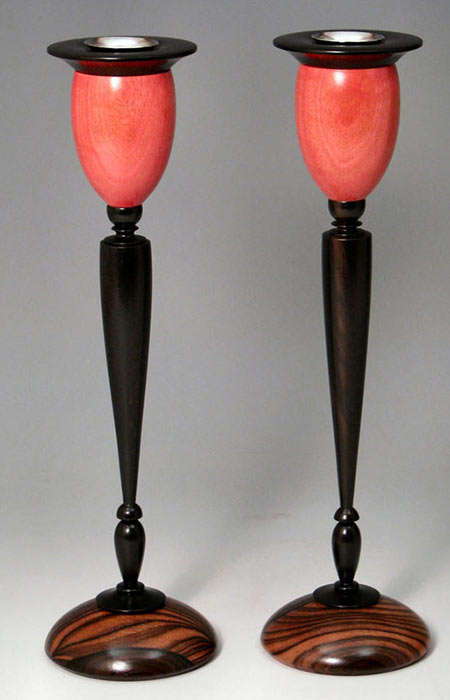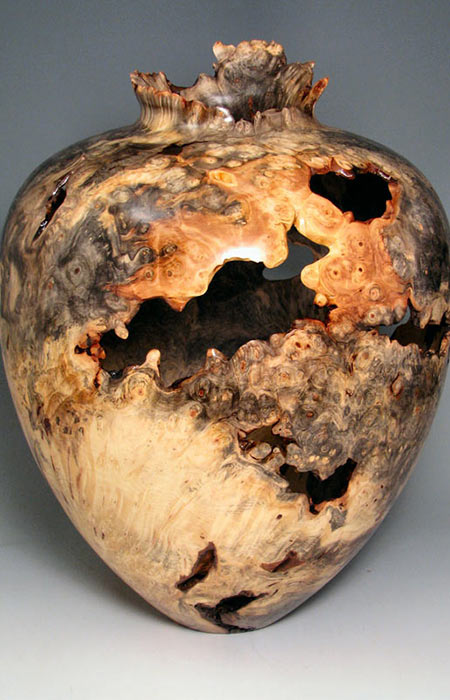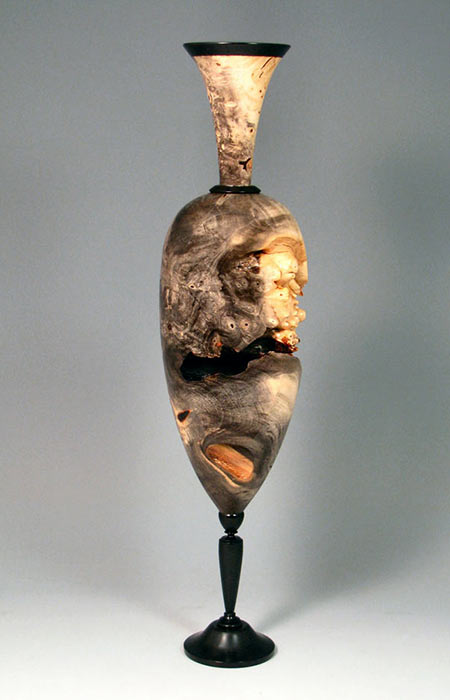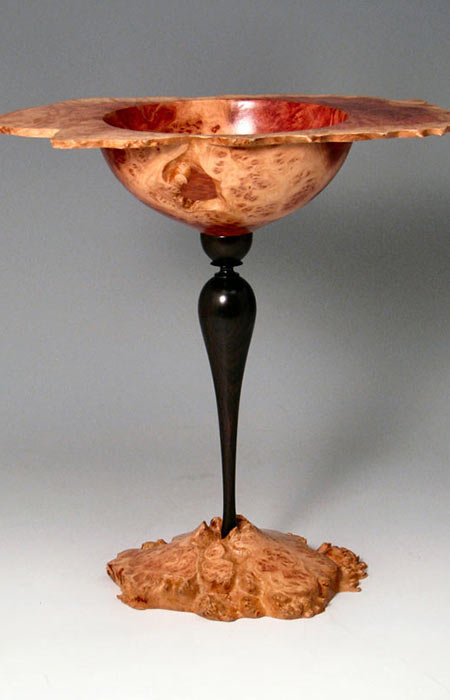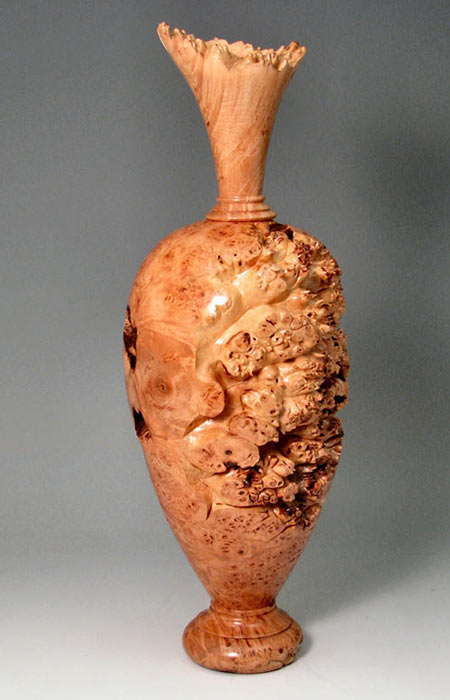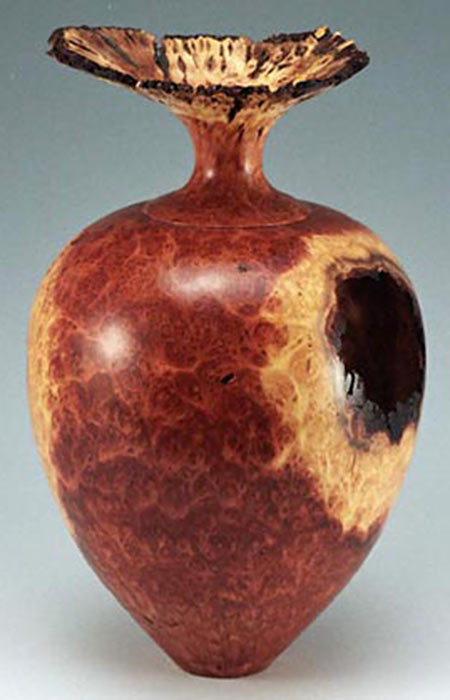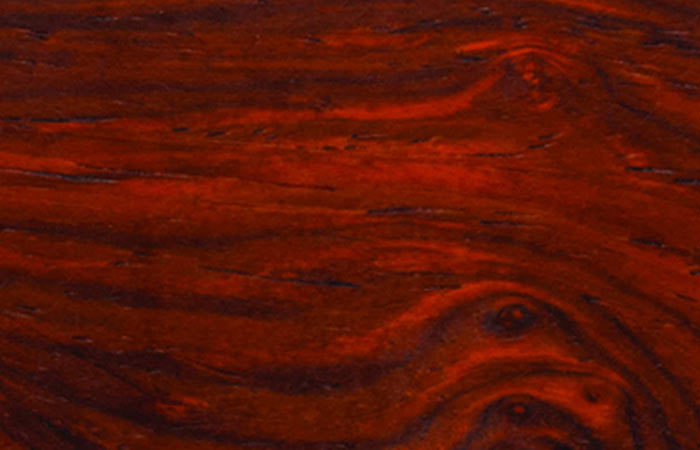
Cocobolo
Cocobolo is a tropical hardwood of Central American trees. Only the heartwood of cocobolo is used. It is usually orange or reddish-brown, often with darker irregular traces weaving through the wood. The heartwood changes color after being cut and can be polished to a lustrous, glassy finish. The sapwood (not often used) is a creamy yellow with a sharp boundary between it and the heartwood.
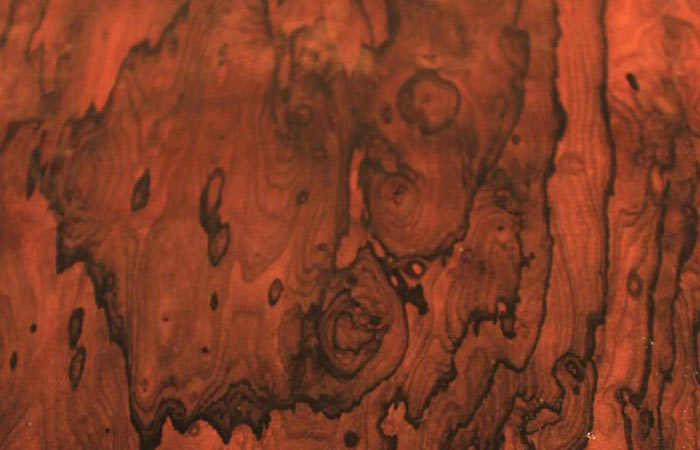
Ziricote
Ziricote wood is dark brown in color and has clusters of bright orange flowers that produce white fruits that are locally made into sweets.
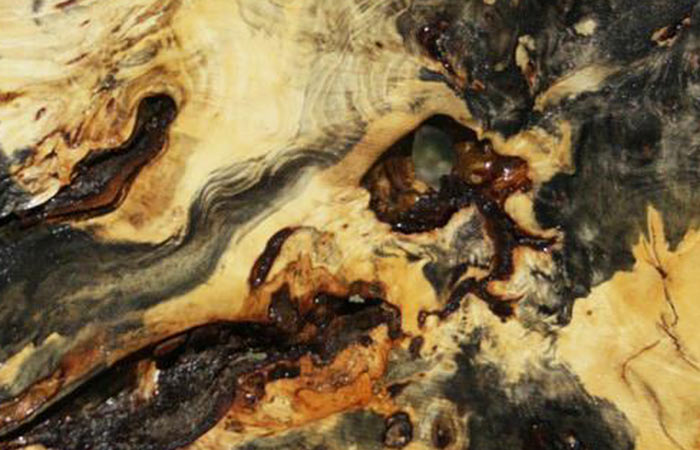
Buckeye Burl
Buckeye Burl is one of the most dramatic woods. The sapwood in Buckeye Burl tends to be creamy, yellowish, or somewhat darker, and the heartwood is white to blueish-gray. Buckeye Burl is a soft, lightweight wood with a fine grain that works well with hand tools. It is challenging to shape or turn with machine tools, but pieces turn out spectacular. Because Buckeye Burl is primarily a root, it may have rocks and sand pockets that are hidden inside and not detectable until turned.
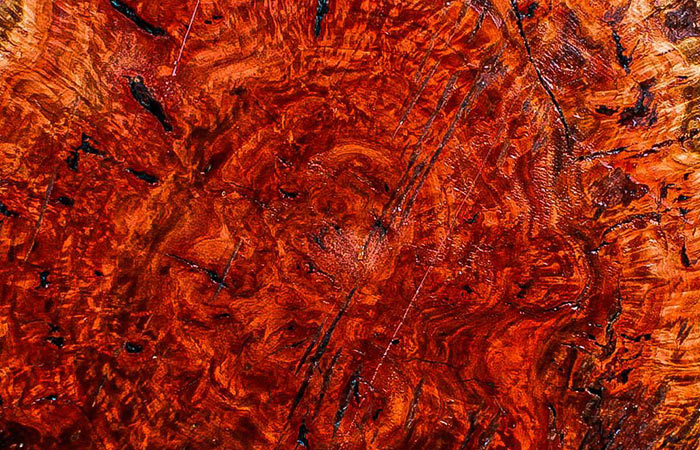
Red Mallee Burl
Red Mallee boasts vivid colors. This native Australian timber has a distinctive mix of pink, red and violet heartwood with contrasting white sapwood. Incredible burl caps offer a natural artistic palette for any artisan.
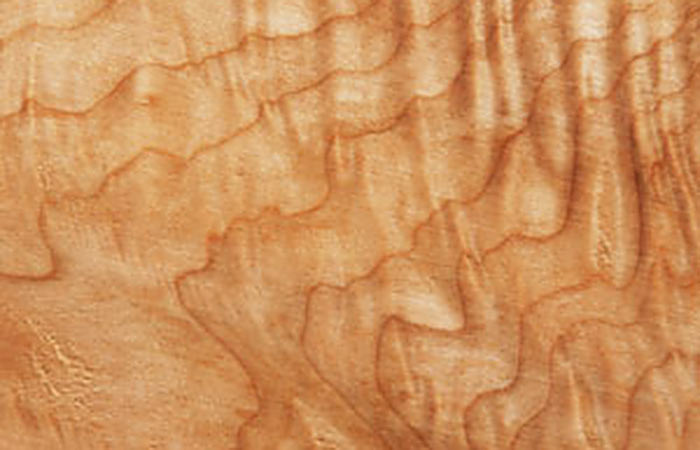
Curly Maple
Curly Maple wood is a favorite for its texture and grain. Each piece is unique. The wood has a grain similar to Quilted Maple but the wood fibers create larger and more deeply undulating waves, perpendicular to the grain. Some Curly Maple is instrument grade and this variety is frequently used for guitars and mandolins and even guitar picks. Curly Maple pieces come in a variety of woodtones — from pink-blond to dark brown to warm reds.
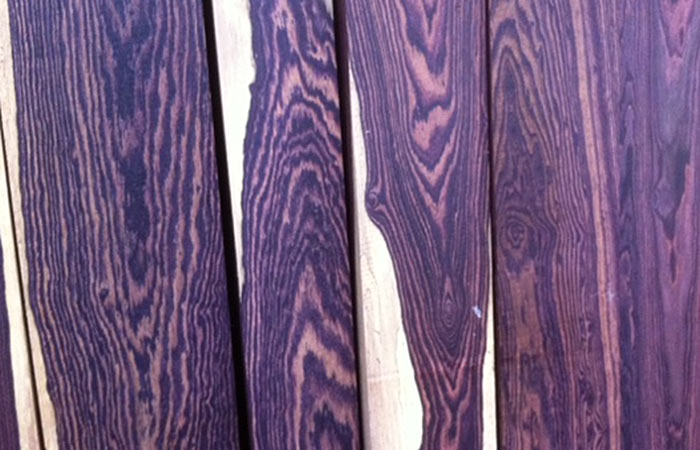
Camatillo
Camatillo is related to Brazilian Kingwood. This beautiful Rosewood is rich with vivid purple and violet colors. Though related to Kingwood, the colors in this wood are more intense and the grain more demarcated. Camatillo comes from Central America where it is selectively logged by hand and harvested from the forest by mules in an environmentally friendly manner. This extremely rare Rosewood species holds its purple color better than any other Rosewood.
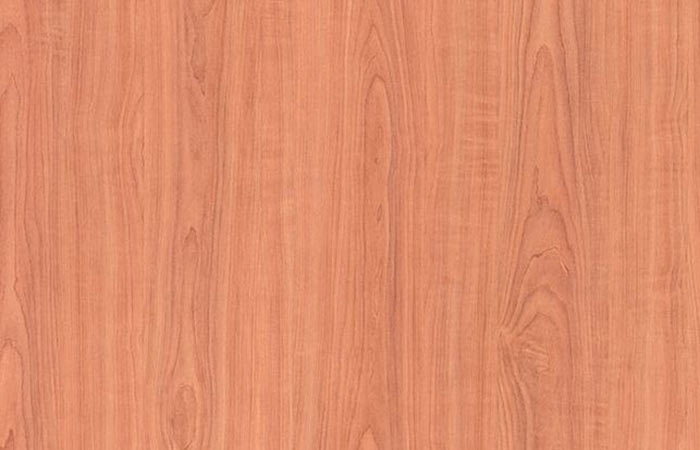
Pearwood
Featuring an interlocking, yet straight, grain Pearwood is attractive and uniform. The surface often shows some slight figure or shimmer and the color is pale yellow to tan with a slight pinkish tinge. The wood is extraordinarily stable and fine textured making it good for both machining and hand operations. It comes from an enormous tree that grows in Africa up to 200 feet tall and can be up to 10 feet in diameter.
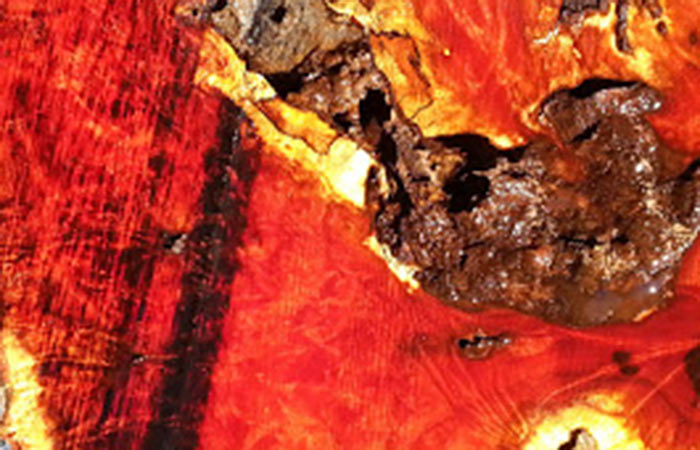
Manzanita
Manzanita, a hardwood shrub with fascinating root burl, grows in California at elevations above 1,000 feet. Beneath the ground lies a burl that, when sawn, cleaned, and polished, can pass for ceramics or marble. Under the woodturner's touch, this "mountain driftwood" evolves into naturally colorful weed pots and vases. But beware of this beauty. The burls frequently grow around rocks that remain undetected until suddenly hit by a turning tool.
